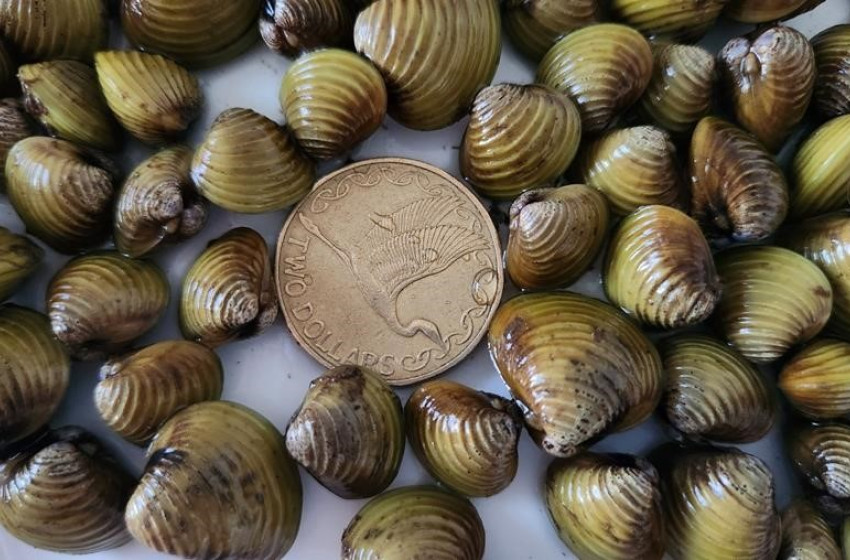Important update on gold clams
- 23/11/2023

We’re pleased to share some good news about the gold clams biosecurity response.
Biosecurity New Zealand today issued a new biosecurity rule for wake boats used on a stretch of the Waikato River preventing them moving to other rivers and lakes, in a bid to prevent the spread of the pest into other areas.
This is a sensible move and one we have pushed hard for in our discussions with Biosecurity New Zealand.
Why is it needed?
We have been calling for some time for a greater focus on ground zero in the Waikato River because that is where the clams are present, and we want to avoid ad hoc closures of lakes and rivers across the country.
We have been working hard behind the scenes with Biosecurity New Zealand and other groups, so we’re pleased our concerns have been heard.
Fish & Game New Zealand has been alarmed for some time about the risk of wake boats spreading the gold clam because there is no known proven method of cleaning the internal tanks and bladders.
That’s why targeting key potential higher-risk transmission pathways, especially in relation to boats with ballast water, is so critical if we are to prevent the spread of the gold clams.
What does the notice do?
The Controlled Area Notice (CAN) issued by Biosecurity New Zealand affects all wake boats using the stretch of the Waikato River from the Whakamaru Dam down to the river mouth at Port Waikato.
Wake boats that have been on this controlled stretch must not be used in any other waterways, including other parts of the Waikato River outside the controlled area. Wake boats are any craft with an internal tank or bladder that cannot be completely drained.
Lake Ōkataina
Fish & Game recognise the concerns of our wider communities, including anglers, around the closure of Lake Ōkataina and potential wider closures of significant freshwater bodies in the Rotorua region and further afield.
We are hoping the stronger focus on the Waikato River means communities around the Rotorua Lakes region are reassured that the right steps are being taken to reduce the risk of transmission to other valued lakes and rivers.
We’d like to thank anglers for their patience over the situation at Lake Ōkataina and continue to urge anglers and all users to follow the check clean dry guidance and the biosecurity rule.
The CAN means all recreational river users that have been in the controlled stretch of the river must continue to follow existing clam-specific Check, Clean, Dry requirements for any craft, gear (such as fishing and other equipment used to gather kai) and equipment (including water skis, wakeboards and inflatable pool toys).
Biosecurity New Zealand has established a permanent wash station at Mighty River Domain, Lake Karāpiro. A mobile wash station is also being funded, which can be moved as needed to events and busy locations along the Waikato River.
Signs outlining the new CAN requirements are being installed along the river at about 70 different locations.
More information about the clam and the biosecurity measures can be found at https://www.biosecurity.govt.nz/clam
Corina Jordan
Chief Executive
New Zealand Fish and Game Council